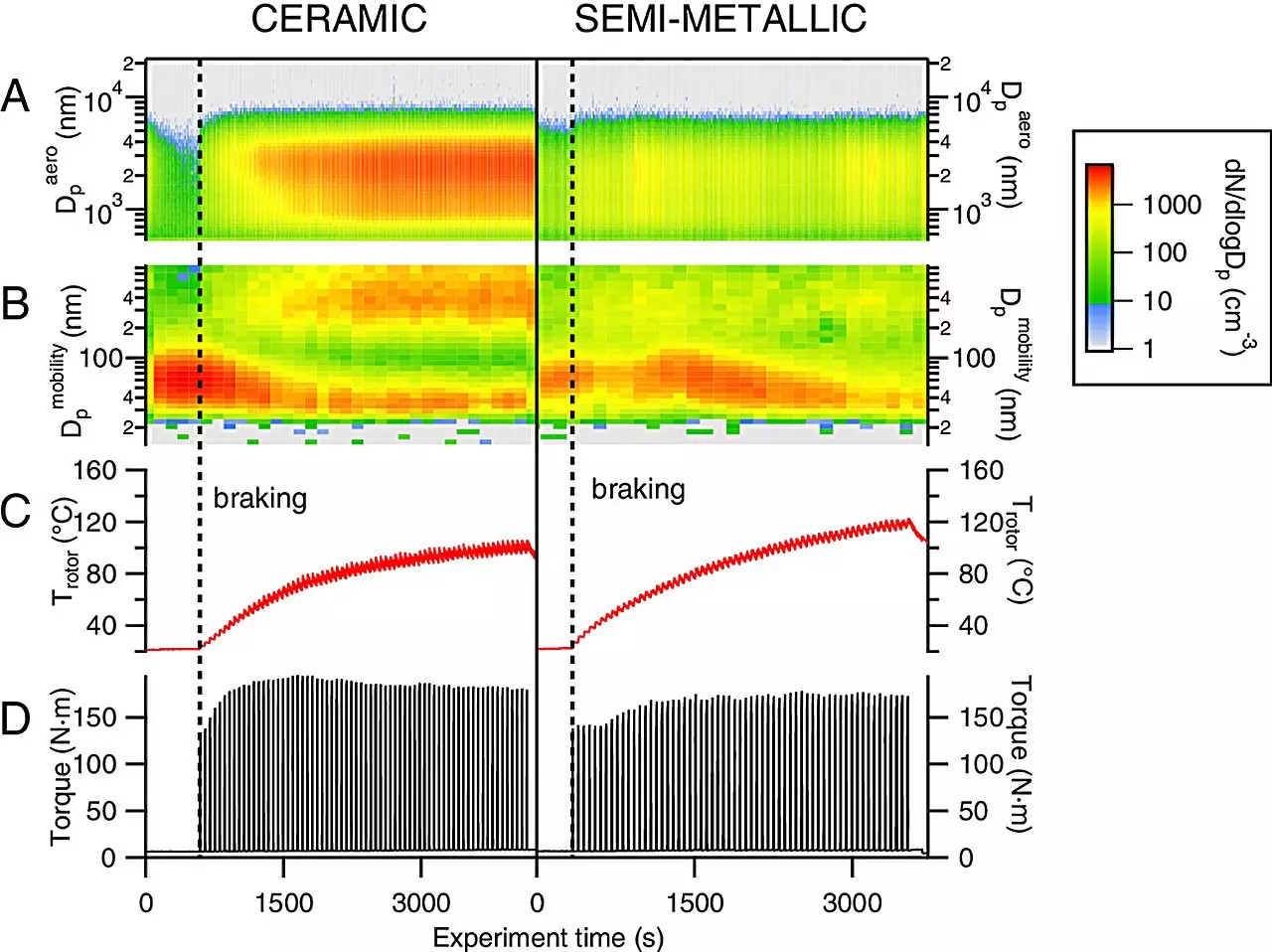The impact of brake emissions on air pollution is an area that has received relatively little attention from scientists. While the particles released during braking may be more harmful to health than those coming from the tailpipe, there is still a lack of understanding regarding the extent of their impact. A recent study conducted by researchers at the University of California, Irvine sheds light on this issue, revealing that up to 80% of aerosol particles emitted during light braking carry an electric charge.
The discovery that a significant portion of brake emissions are electrically charged has important implications for reducing air pollution from vehicles. By exploiting the electric charge of these particles, it may be possible to develop strategies to remove them from the air before they can pose a threat to public health. This finding highlights the need for further research on the toxicity and health effects of brake wear particles, especially in areas with high levels of car traffic.
Challenges Presented by Electric Cars
As electric cars become more common, the issue of brake emissions is likely to become even more pressing. Contrary to popular belief, electric vehicles are not completely emission-free, as the wear and tear on their brakes still release particles into the air. This underscores the importance of developing comprehensive strategies to address emissions from both tailpipes and brakes, in order to mitigate the overall impact of vehicle-related pollution.
One of the key findings of the UCI study is the unequal distribution of the public health risk posed by brake emissions. Lower-income communities, which are often more heavily impacted by traffic congestion, tend to bear a disproportionate burden of exposure to brake emissions. This raises important environmental justice issues, highlighting the need for policies that address disparities in pollution exposure and prioritize the health and well-being of all members of society.
In addition to conducting research on brake emissions, the UCI team is actively engaged in community outreach efforts to raise awareness about the issue. By collaborating with local organizations like the Madison Park Neighborhood Association in Santa Ana, the researchers are working to disseminate their scientific findings to the public. This partnership demonstrates the importance of involving communities in discussions about environmental health and empowering them to advocate for solutions that protect their well-being.
Overall, the study on brake emissions conducted by the University of California, Irvine highlights the need for a more nuanced understanding of the sources of air pollution from vehicles. By identifying the electric charge of brake wear particles and exploring potential mitigation strategies, the research contributes to ongoing efforts to improve air quality and public health in areas impacted by car traffic. Moving forward, it will be crucial to continue studying the environmental and health impacts of brake emissions, while also addressing the underlying social and economic factors that contribute to unequal exposure to pollution.


Leave a Reply